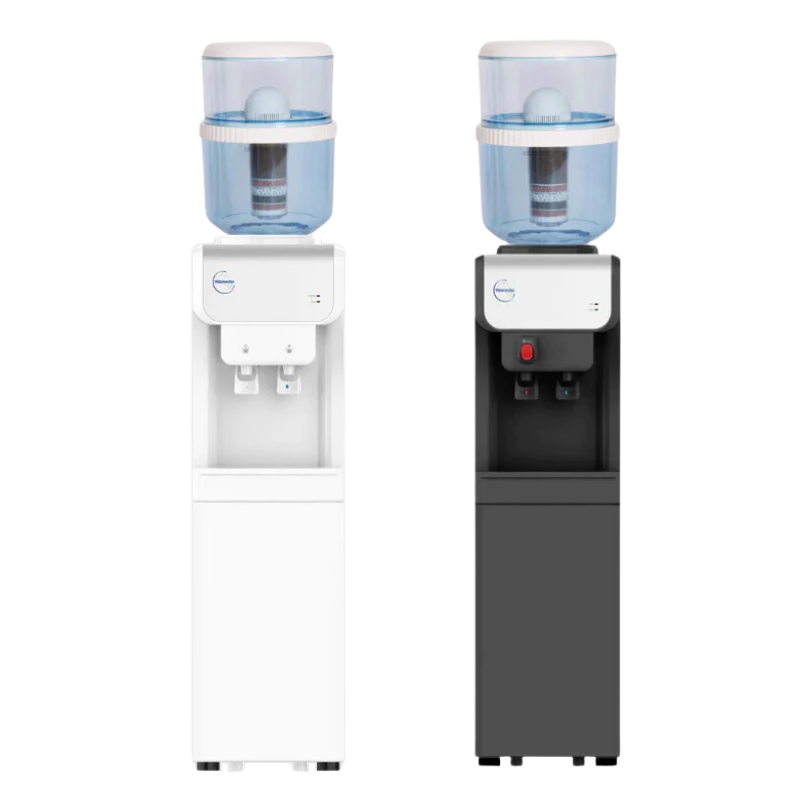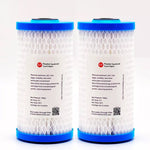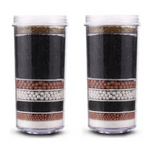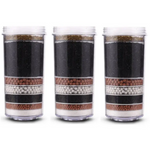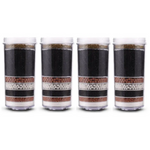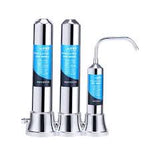You have no items in your shopping cart.
Your Water Dispenser May Be a Hidden Health Threat

What if the very thing that keeps you hydrated is also putting you at hidden health risk? From a buildup of bacteria to being contaminated with plastic, an unclean or poorly maintained dispenser can become a breeding ground for trouble. Here are potential dangers — and how to keep your water safe and healthy.
Top Health Risks of Bottled Water Dispensers To Keep in Mind
Although water dispensers are commonly used for drinking water, these dispensers and bottles are a breeding ground for bacteria, mold and possibly chemicals if not maintained properly. Let’s drill down on the top threats and how to avoid them.

1. Bacterial Growth & Contamination
The Risk:
If not cleaned frequently, water dispensers can attract harmful bacteria such as E. coli, Legionella and other microbes that bloom in wet areas. The leading culprit: biofilm — a slimy coating of bacteria and mold that develops inside the device, particularly in hard-to-reach places.
How It Affects You:
-
Drinking tainted water can lead to stomach problems, infections and even serious illnesses like Legionnaires’ disease.
-
Airborne droplets transmit bacteria and spread into the air behind the dispenser.
Prevention Tips:
✅ Wash your water dispenser at least once a month with a mild bleach or vinegar solution.
✅ Filtered refillable bottles, such as the ACE Water Dispenser Bottle - 20 Litre, will reduce the risks of contamination.
✅ Make sure to change the water bottle often to avoid stagnation if used in a bottle-fed dispenser.

2. Mold and Slime Build-Up
The Risk:
If you see a greenish or black film around your dispenser’s spout or inside the reservoir, mold and algae may be claiming your territory. Those fungi grow in moist conditions and it can spoil your water in the long run.
How It Affects You:
-
Inhaling mold spores can lead to respiratory problems, particularly for individuals with allergies or asthma.
-
Drinking moldy water can cause digestive issues and immune-system responses.

Quick Fix:
✅ Weekly: Wipe down external parts with disinfectant wipes or a vinegar solution.
✅ Soak the internal parts in a baking soda or hydrogen peroxide solution once a month for a deep clean.
✅ Prevent moisture build-up by keeping your dispenser in a cool, dry place.

3. Plastic Leaching & BPA Exposure
The Risk:
Many bottled water dispensers are made with plastic parts that could leech chemicals like BPA (bisphenol-A) into your water. BPA is a synthetic compound that can be found in many plastic products, but it can break down and creep into your drinking water when exposed to heat (like hot water dispensers or summer heat).
How It Affects You:
-
BPA has been shown to interfere with hormones, which can in turn affect fertility, metabolism and brain development.
-
Chronic exposure is linked to increased risks of cancer, heart disease and diabetes.
Solution:
✅ Choose BPA-free water dispensers made from food-grade materials.
✅ Avoid leaving plastic bottles in hot environments, as heat accelerates chemical leaching.
✅ Upgrade to ceramic filters or stainless steel dispensers for added protection.
4. Fluoride and Heavy Metal Concerns
The Risk:
Bottled water are prove to contain fluoride, lead, arsenic, and other heavy metals that can build up in your body over time. Municipal tap water may even contain added fluoride — which can carry detrimental health effects at high doses.
How It Affects You:
-
Excess fluoride exposure has been linked with dental fluorosis (tooth discoloration) and skeletal fluorosis (bone deterioration).
-
Lead, arsenic and other heavy metals can lead to neurological damage, kidney problems and developmental issues in young children.
Upgrade Your Filtration:
✅ Remove even more fluoride, heavy metals, and other contaminants using a Fluoride Ceramic Water Filter.
✅ If you drink bottled water, look for brands that test for heavy metals and fluoride.
✅ You want the highest level of purification, consider reverse osmosis filtration.

Signs Your Dispenser Might Be Making You Sick
-
Your water tastes or smells funny.
-
You or a family member keeps getting stomach bugs.
- There is visible slime, mold, or residue inside the dispenser.
- The dispenser is slow to dispense—a sign of internal buildup.
The Right Way to Clean and Maintain Your Dispenser
1. Regular Cleaning Routine
- Daily: Wipe down the exterior and spout.
- Weekly: Rinse the drip tray and external parts.
- Monthly: Deep clean with a solution of vinegar and warm water.

2. Replacing Filters and Pads
- Even if you’re using filtered water, microbial buildup can occur inside your dispenser.
- Swap out plastic dome fiber pads every few months for best results.
- Consider adding a Maifan Stone Water Filter to naturally mineralize your water.
Real-Life Story: How One Aussie Family Avoided Waterborne Illness
Sarah from Melbourne always assumed her bottled water dispenser was safe—until her two kids started having repeated stomach issues. After switching to an 8-Stage KDF Water Filter and cleaning her dispenser monthly, their symptoms disappeared. “I had no idea something as simple as cleaning our dispenser could make such a big difference!” she says.

Choosing a Safe and Reliable Bottled Water Dispenser paired with a high quality filter!

- Look for BPA-free models to avoid plastic leaching.
-
Opt for a dispenser that will not be too difficult to clean and maintain.
-
When it comes to installation, make sure to combine your dispenser with a good quality filter system, such as the 7-Stage ACE Fluoride Reduction Filter.

Conclusion: Hydrate And Be Safe!
Bottled water dispensers are a true convenience, but only when they’re well maintained. With regular cleaning, filter changes, and investing in the right type of filtration system, you and your family can be enjoying clean, safe water every day!
For the best filtration solutions, explore our range of water filters and take control of your home’s hydration today!

